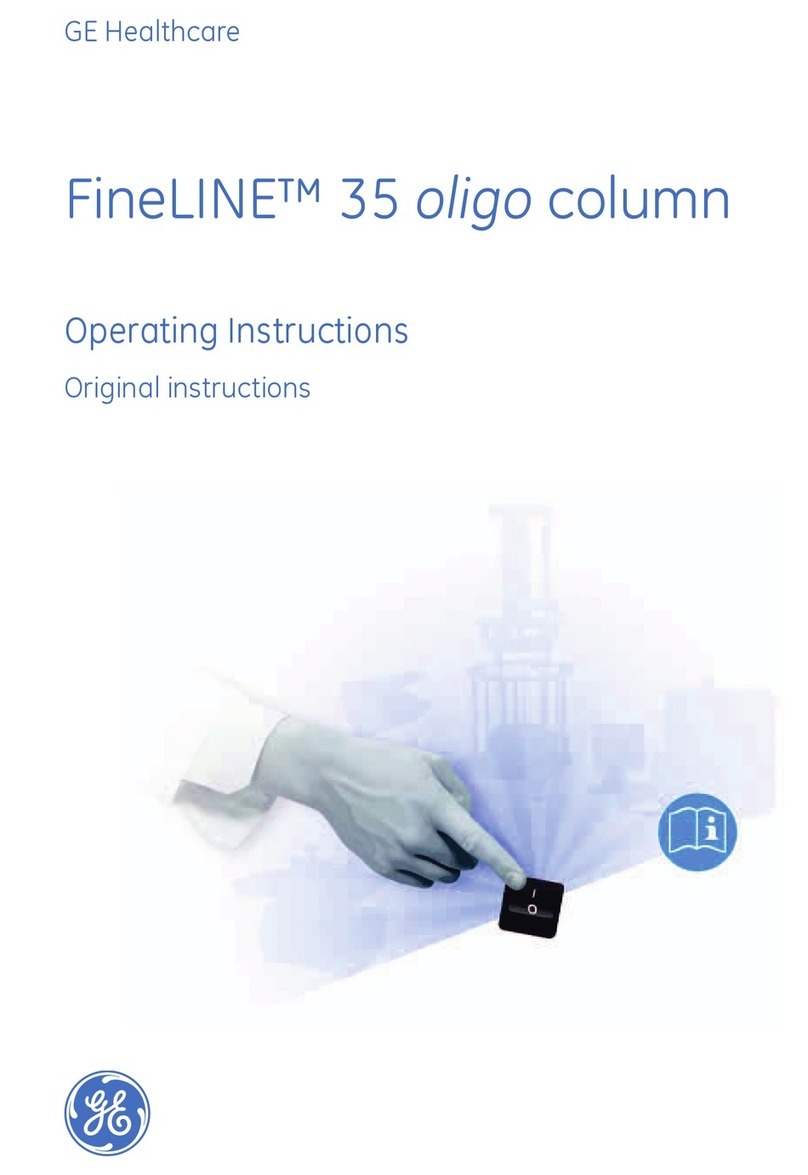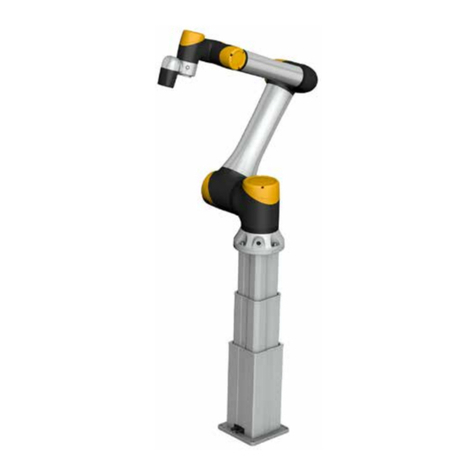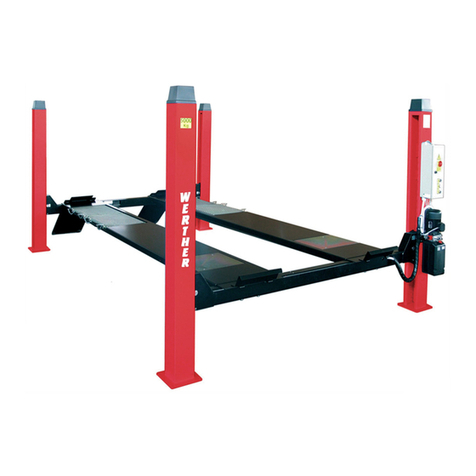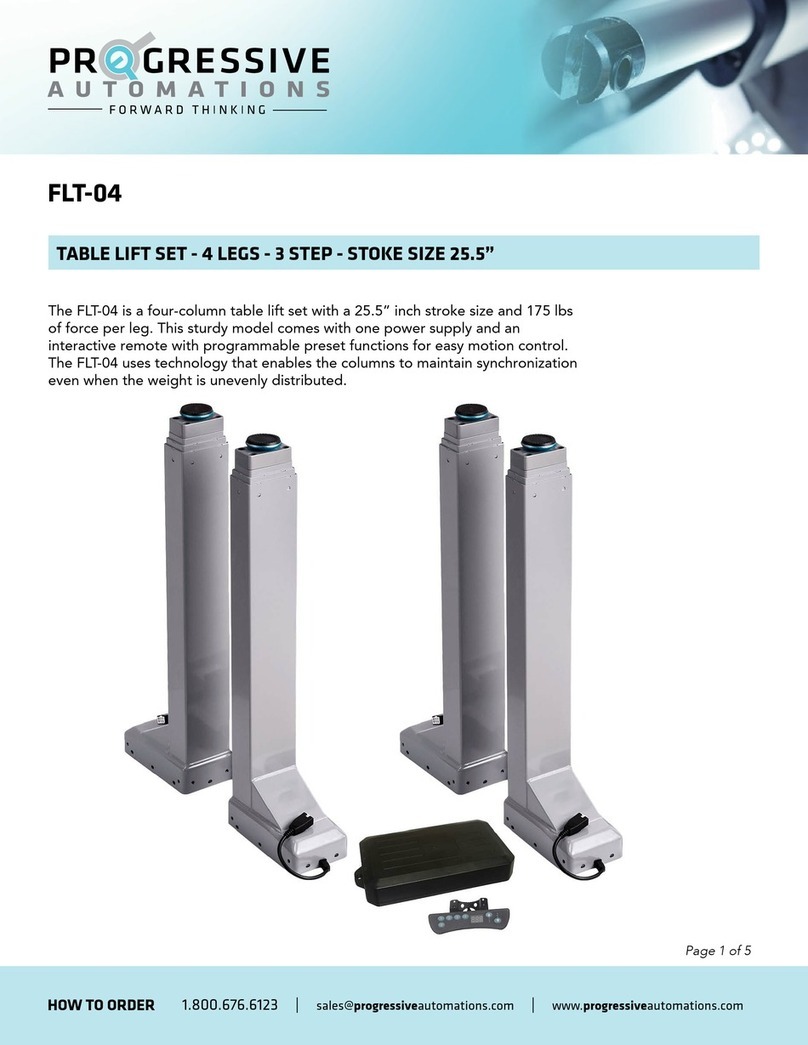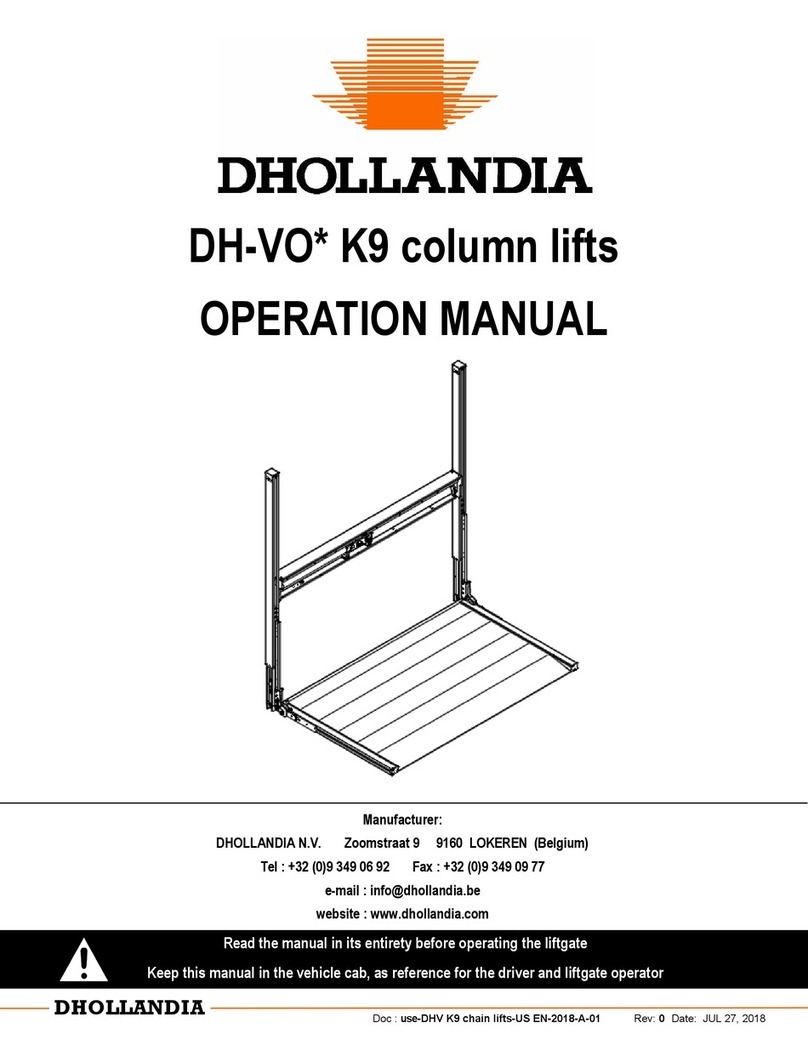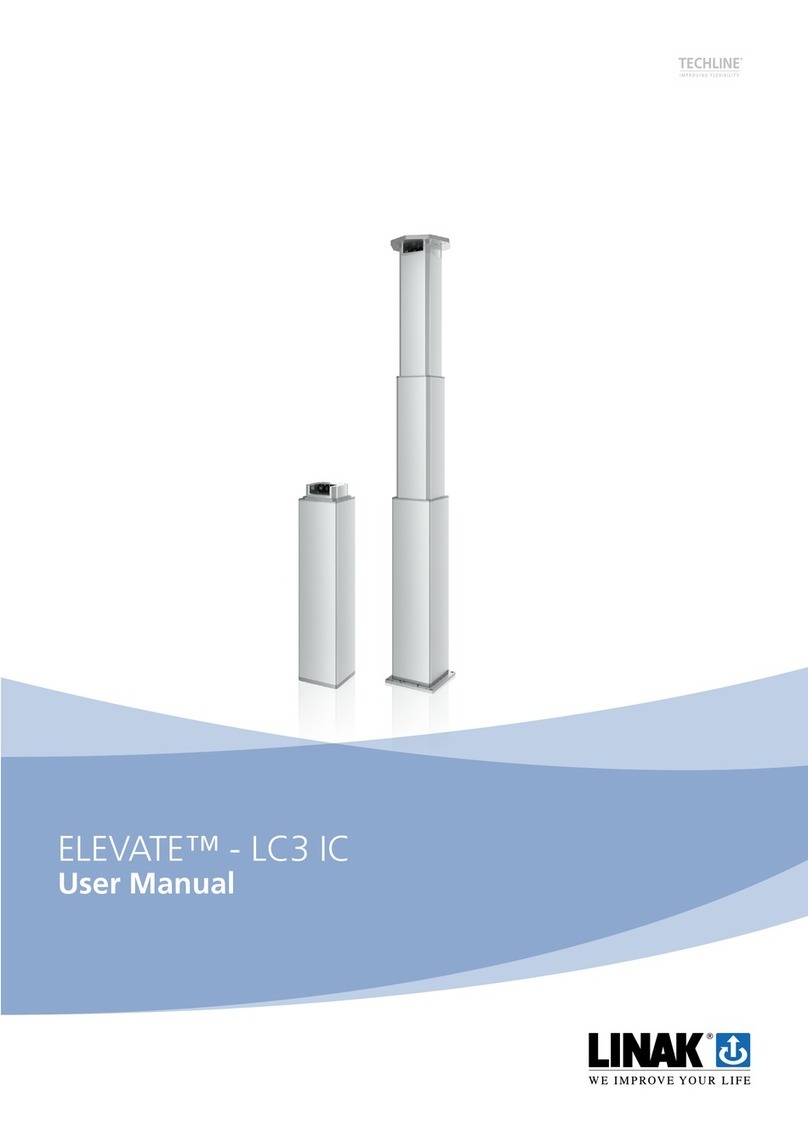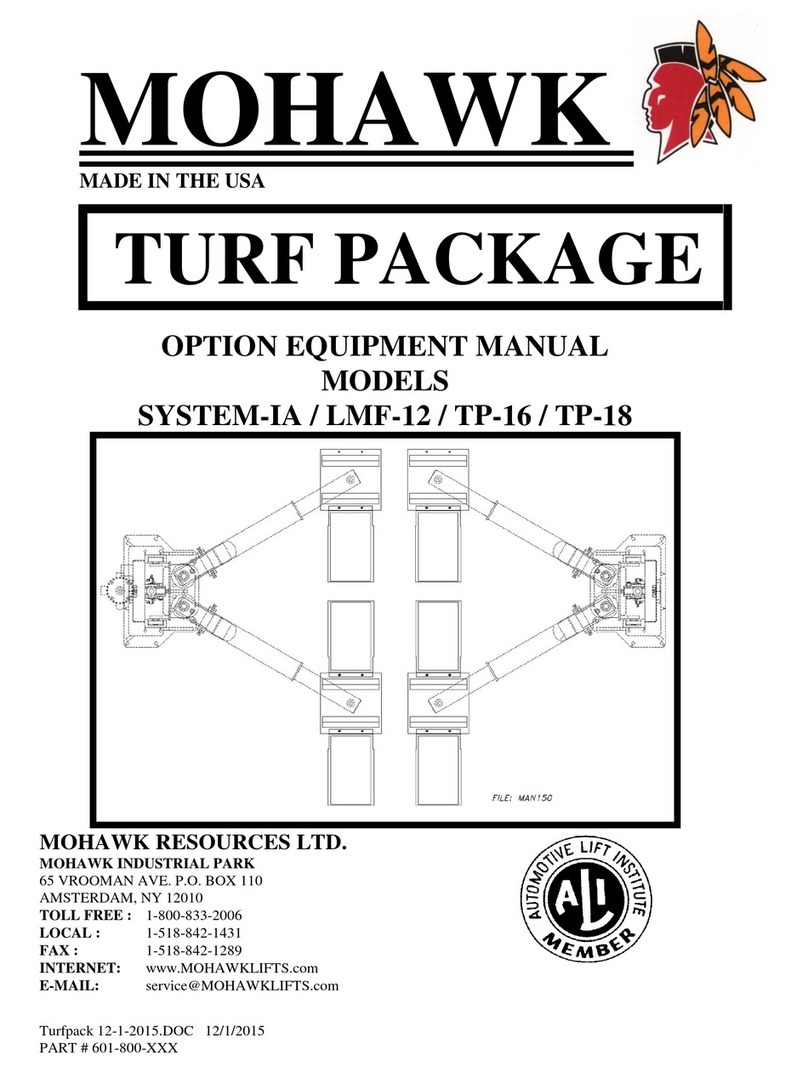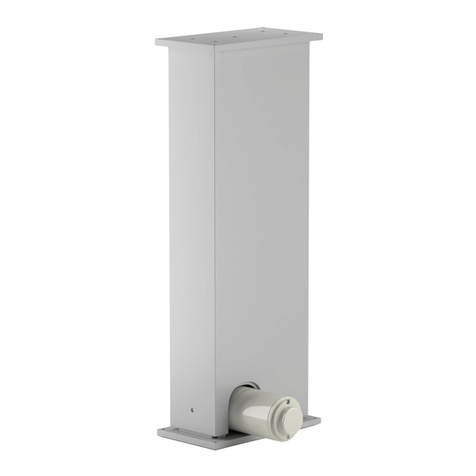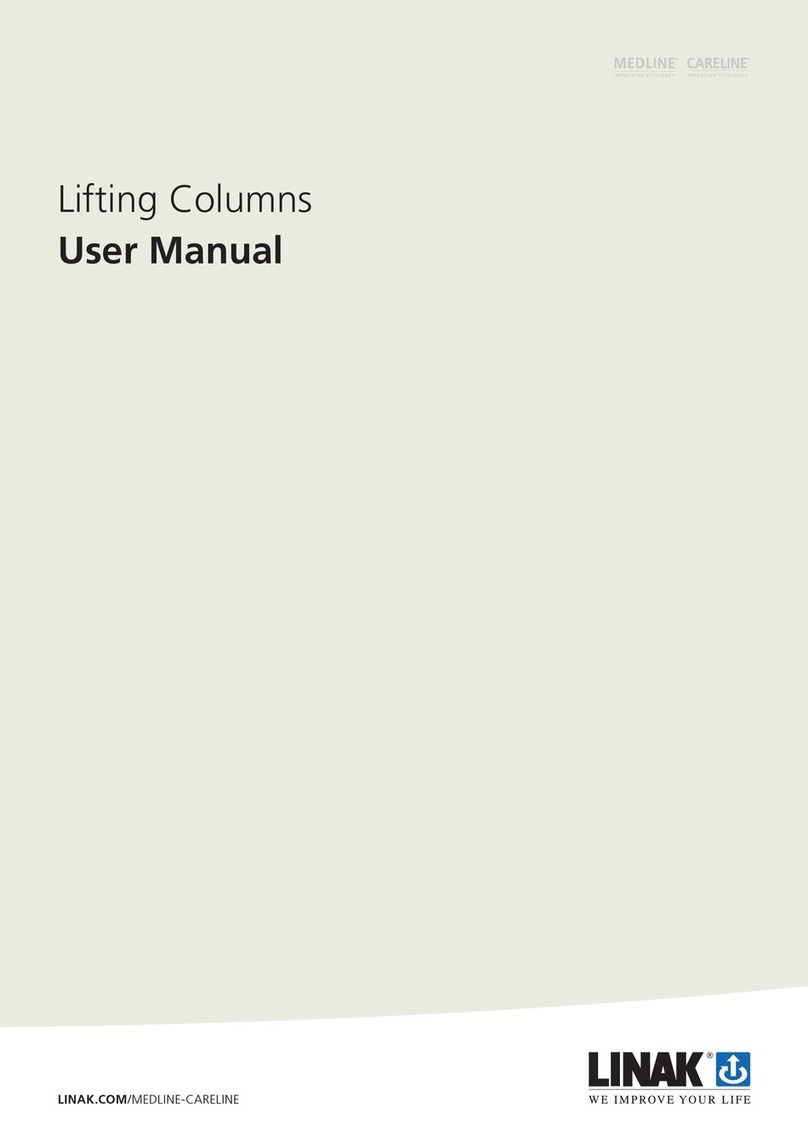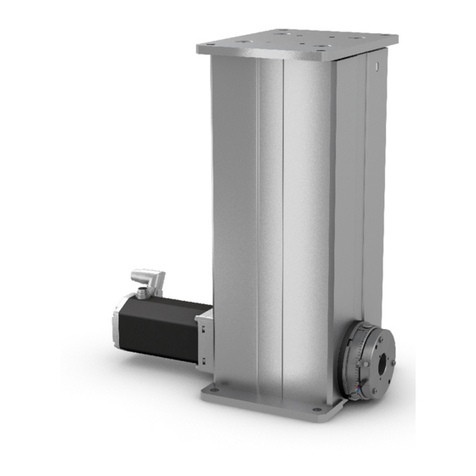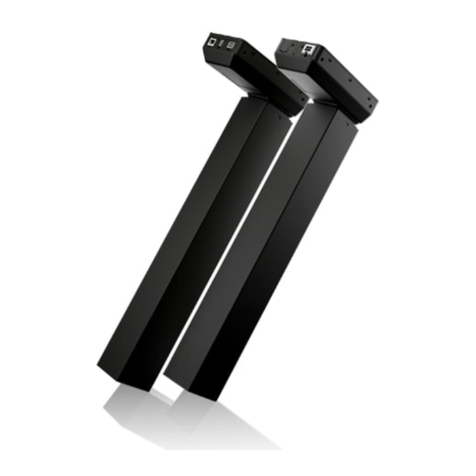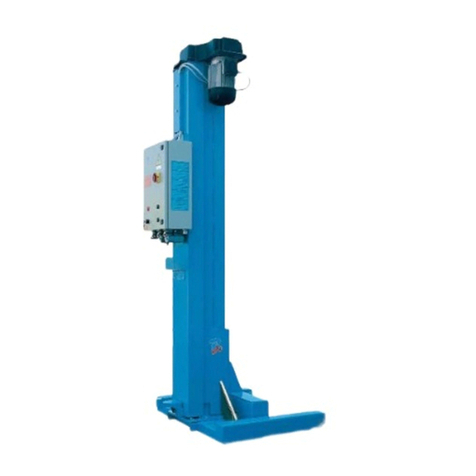
Six Monthly Checks - LOLER
1. Remove handle cover using suitable security screw tool
and inspect and lubricate gearwheels. Use Omega 73 no. 2 harsh
environment grease or equivalent. Do not use standard gear
grease because it will dry out prematurely and will lead to
premature gear wear. Paint seal screws when refitted.
2. The machine should be subjected to the test procedure below:
a) Fully lower platform to the transport position.
b) With a calibrated digital spring balance apply a further 25kg
force to the drive handle in the anti-clockwise direction (lowering),
first releasing the handle knob from the back plate to allow the
handle to turn (see fig A).
3. Inspect the drive belt for signs of wear. In order to do this, remove
the tool tray and mast cap plate.The mast cap screws are
additionally secured with a threadlock adhesive. If difficulty is
experienced removing these screws then they will need to be
heated with a heat gun for a few minutes.With this cover removed
a full visual inspection of the belt and pulleys can be made.The
platform can be raised and lowered fully whilst viewing the
belt and pulleys. Minor scuffing and wear is acceptable, but there
should be no signs of the inner braided wire or Kevlar cords visible.
If there are any signs of excessive wear, contact the manufacturer
or authorised distributor.When complete, refit the mast cover and
refit the fixing screws with a medium strength threadlock.Paint
seal screws when refitted. Refit tool tray. It is extremely important
that these bolts be replaced correctly.
4. Check the mast interlock is undamaged. Check the casing for signs
of damage and remove the end plate. (Pic 1, shows mast
interlock with cover on).Check the plunger is free to move by
holding end with long nosed pliers and pulling outward and then
releasing (Pic 2). Ensure plunger springs back freely. Refit cover
and screw. Paint seal screw when refitted.
5. Inspect condition of automatic wheel lock.Look under brush
strip at rear of chassis when platform is elevated so that mast outer
is clear of chassis. Check brake cam plates (Pic 3 and Fig B) are
undamaged and that the two attaching screws are tight. With an
assistant to lower the platform, observe the action of the cams and
the movement of the brake pins.Ensure the movement is free and
the pins clear the wheel discs.When the platform is elevated
ensure the pins fully engage the brake discs. Ensure the pockets in
the wheels are in good condition.
6. Check all instruction labels are present and clear. Refer to the key
spare parts.
7. Check crank handle knob is securely fixed with M12 nyloc nut and
roll pin through plastic tip. Ensure handle springs back to the
locked position freely.
When replacing components for any reason, only use OEM
specification parts, either supplied from the manufacturer or
authorised in writing by the manufacturer.Warranties and design
approvals will be void if alternative components are fitted.
It is essential to obtain manufacturer’s approval of any alteration
which might affect stability, strength or performance in writing
before proceeding.
When refitting a rear wheel always use a new cotter pin (4mm
diameter x 32mm A2 stainless steel). NEVER REFIT A USED
COTTER PIN.
MAINTENANCE PROCEDURES
10 Courtesy of Crane.Market

